
Tala'a Sghira
Exploring Fez el Bali Medina Along Tala'a Sghira
I was in Fez, staying in el Bali, the large medina
of the old city.
On my first full day, I took the advice of my guesthouse
and went on a half-day tour with a local guide.
It was largely along Tala'a Sghira,
one of the two main streets through Fez el Bali
running from the Bab Boujloud gate,
past my guesthouse,
to the Qarawiyyin mosque.
It was good, I was glad that I did it as it got me into places
that, on my own, would have taken me a few days overall.
Of course it involved many visits to shops.
Even if you say you aren't interested in buying anything,
you will end up in shops.
A shop visit can be interesting, as most are
associated with workshops and you see the items being made.
But now I feel that I've gotten the benefit.
I'm glad that I did the half-day tour,
but I wouldn't repeat it on a return visit to Fez.
The main souk streets of a medieval Islamic city
run from the main gates to the area of the city's main mosque
complex.
In Fez that means the Qarawiyyin mosque and the nearby
Zawiya or tomb of Moulay Idris II.
In Fez, as usual, the main commercial zone lies along those
main streets and around the main mosque.
Chouara Tannery
Narrow passageways called derbs lead off the main streets into residential areas. Many are a dead end, with the derb closed off overhead as the buildings on either side have been connected together.
We walked along Tala'a Sghira and off onto a side lane, passing many derbs on our way to the Chouara tannery. Leather tanning is a dirty, smelly business. I expected an epic stench of death. But, maybe because of that day's weather, it wasn't bad at all. I was afraid I had contracted COVID-19 and lost my sense of smell. But no, soon after that I was smelling things. It was dark and cloudy, it wasn't at all hot, and it was a quiet Sunday morning with little going on. That combination made for an unusually non-smelly day at the tannery.
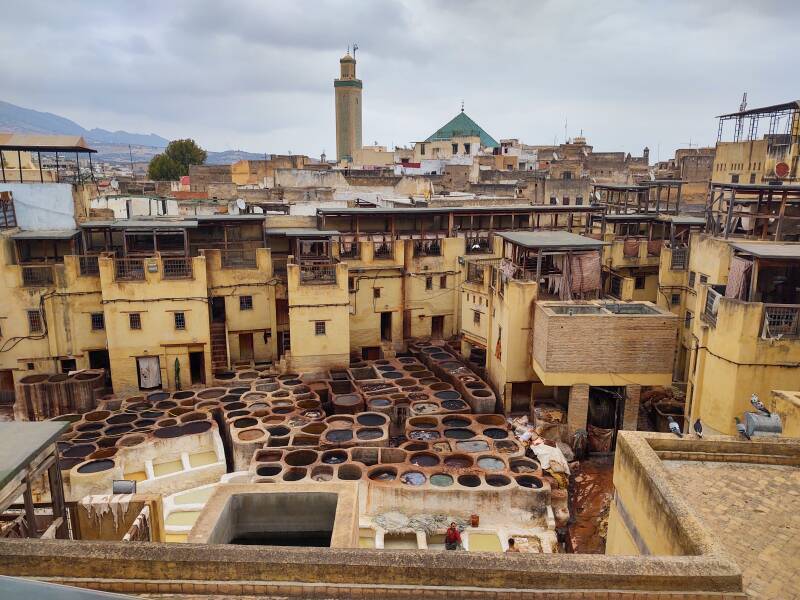
Local tradition says that the tannery dates to the early years of the city. Idris I founded the city in 789, then Idris II built a settlement there and moved his capital from Volubilis to Fez in 809. And very soon after that, the story goes, the Chouara tannery was founded. Historical records go back to the early 12th century, telling that the tanneries were the source of much of the city's wealth, and that their products were shipped as far as Baghdad.
Royalty and nobility in Europe began shipping their entire libraries to Fez for their books to be bound in Moroccan leather.
The technology has changed very little. The work is still done manually, except for a mechanical system used to rinse the hides after treatment. The round stone vessels are like what has been used all along.
The white liquid is a mix of cow urine, pigeon feces, quicklime (calcium oxide, produced by burning limestone or seashells), salt, and water. Two to three days of treatment with that cleans and softens the hides, and makes them more receptive to absorbing the dyes.
The other stone vessels hold dyes made from various natural colorants. After dying, the hides are dried in the sun.
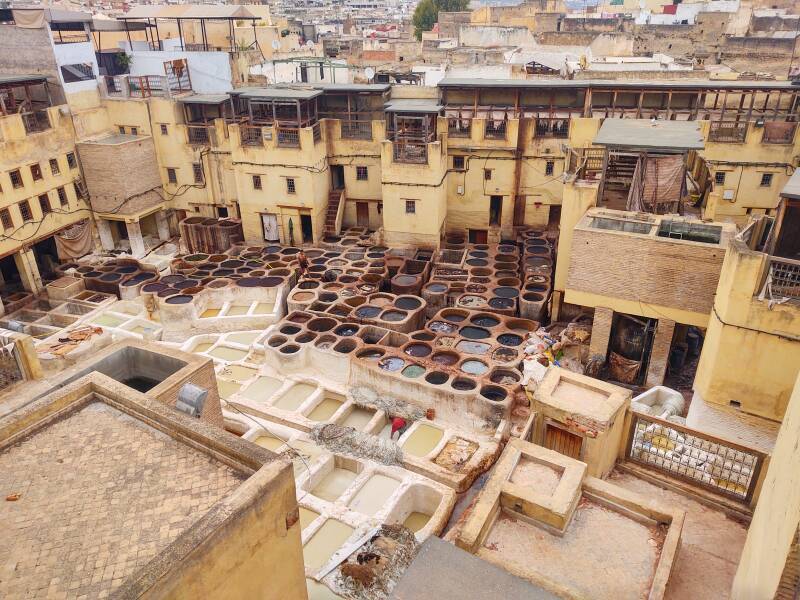
Hammam
We next visited a hammam or bath complex. I could smell the soap, and I quit worrying that my tannery visit indicated a COVID-induced lack of smell.
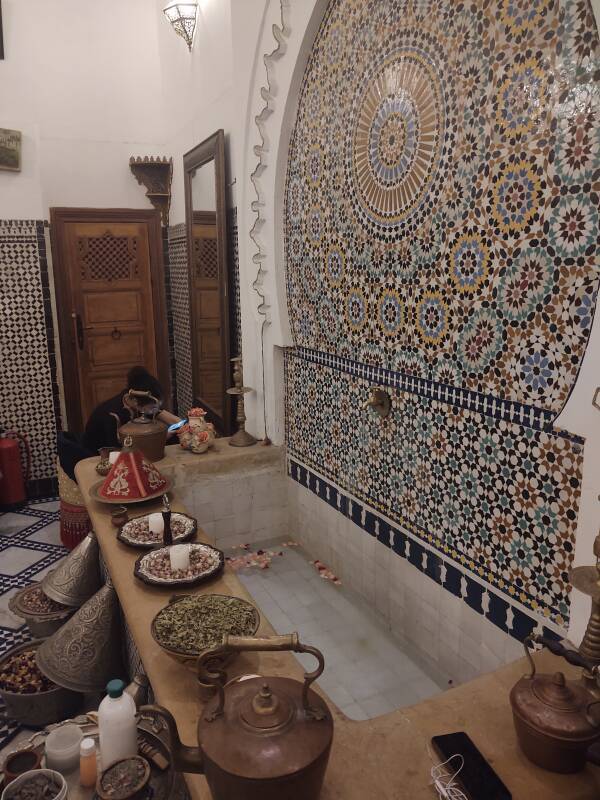
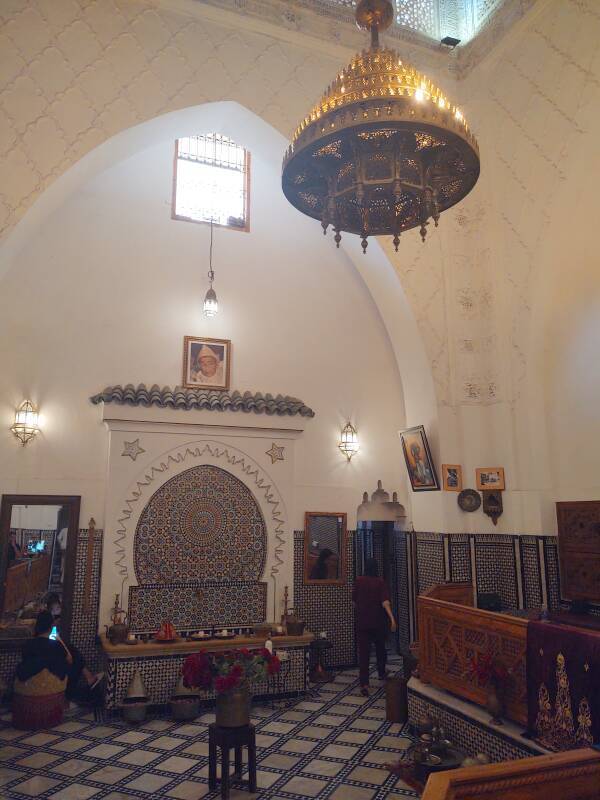
Fabric Dying
The leather tanneries carry out just limited stages of the overall process. Their product is cleaned, softened, and dyed leather. That is transported to specialized workshops that make shoes, bind books, and so on.
Fabric and yarn get the same gradual process. A cluster of workshops makes dye and then applies it to yarn and to fabric. Once dyed, it moves on to be used to make products.
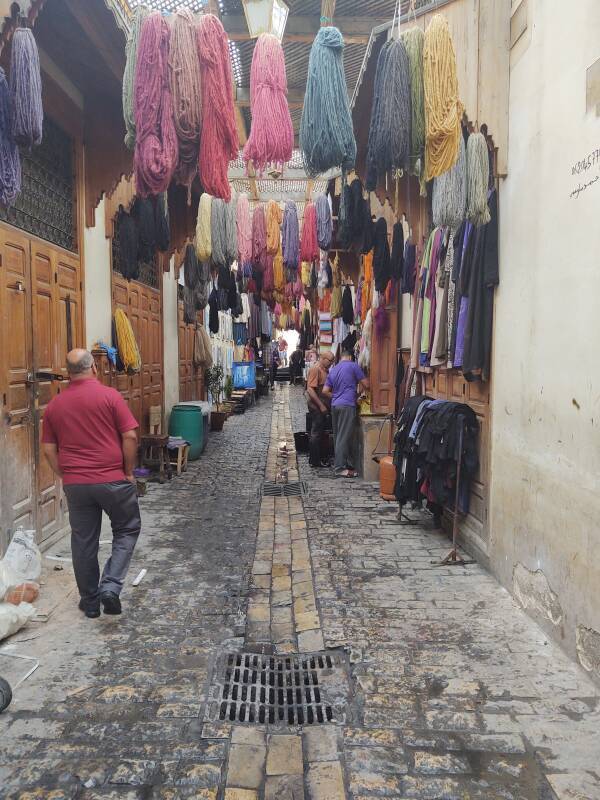
Metal Workshops
A cluster of workshops creates metal devices, mostly from brass and bronze.
Some workshops specialize in vessels for preparing and serving food — pots, pan, cauldrons, trays, plates, and bowls, from individual to enormous size.
Others produce lamps and candle holders and other items made from metal sheets pierced in elaborate patterns.
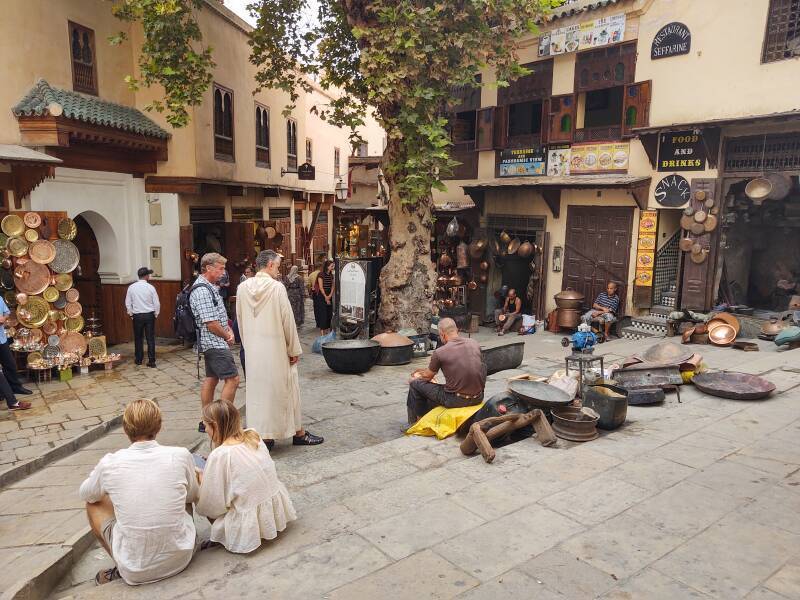
Al-Attarine Madrasa
The al-Attarine Madrasa is one of the high points of early 14th century architecture in Fez. It's a madrasa or a school teaching theology and Islamic law. Its name comes from the nearby Souq al-'attārīn, the perfume and spice market.
The Marinid dynasty built several madrasas to ensure that the religious elites and general population in Fez saw the dynasty as a promoter and protector of orthodox Sunni Islam.
al-AttarineMadrasa
This madrasa is built close to the al-Qarawiyyin mosque and university, the intellectual center of ancient Fez. Here are just two quick views of the central courtyard. See the detailed page for much more on this madrasa.
Spice Shop
We went to a shop in the Souq al-'attārīn offering spices plus soaps and perfumes and health products.
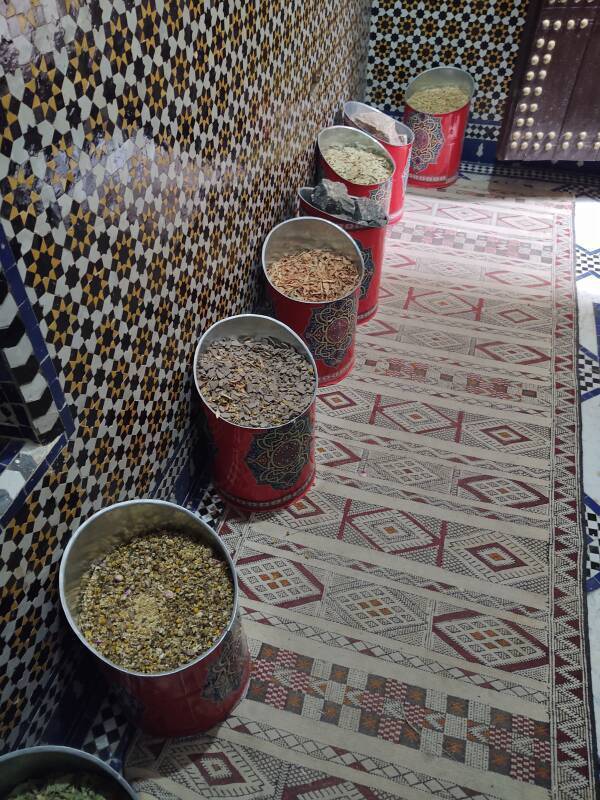
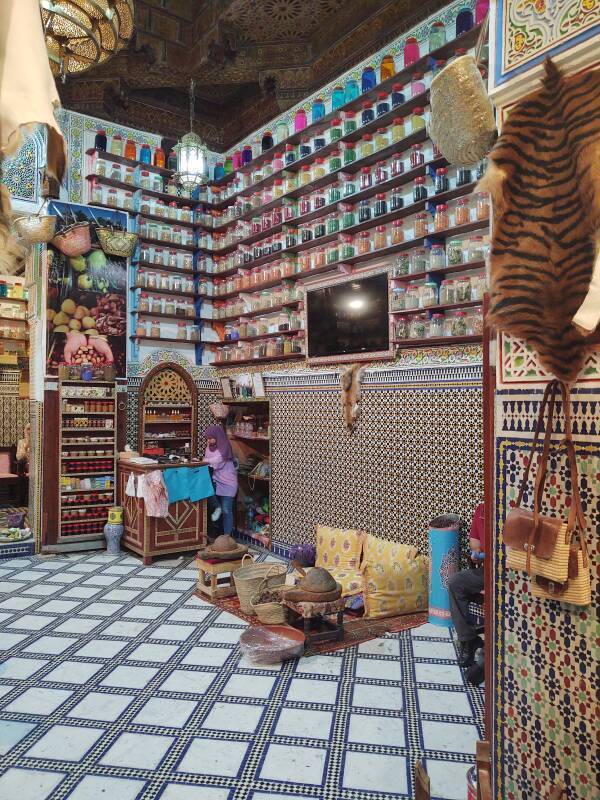
The guide wants to take you into these shops so they have a chance to sell you something, for which the guide receives a cut. And so there is tension between getting you into a shop, but then also out of it to move on to the next opportunity.
A spice (and perfume and drug) shop offers a wide range of products at relatively low costs, so the guide won't want to linger as they might at a carpet shop where a purchase would bring far more baksheesh.
And so the guided visit becomes almost frantic. A confusing whirlwind of substances are rubbed on the backs of your hands and held under your nose for you to experience. The distinction between edible spice, perfume, soap, curative lotion, and folk pharmaceutical can disappear into the rapid patter.
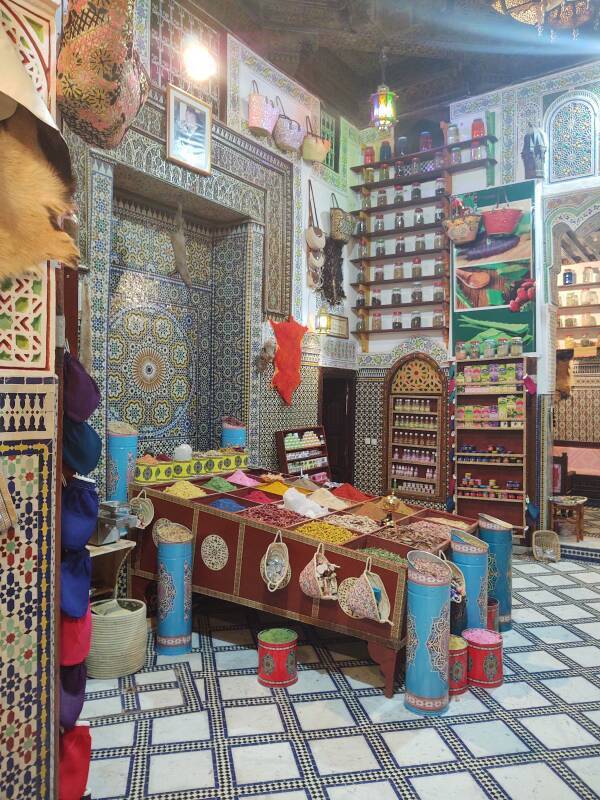
Weaving Workshop
The dying shops add color to yarn and thread. The colored yarn and thread move on to a workshop where they is woven into cloth.
This man was operating a loom. It was interesting to watch how the loom worked. But it was a little difficult to follow as everything moves so fast.
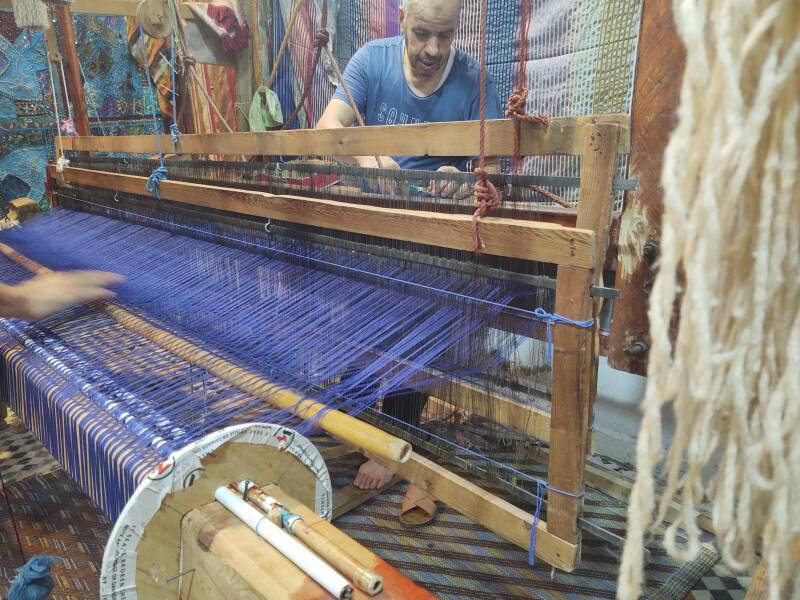
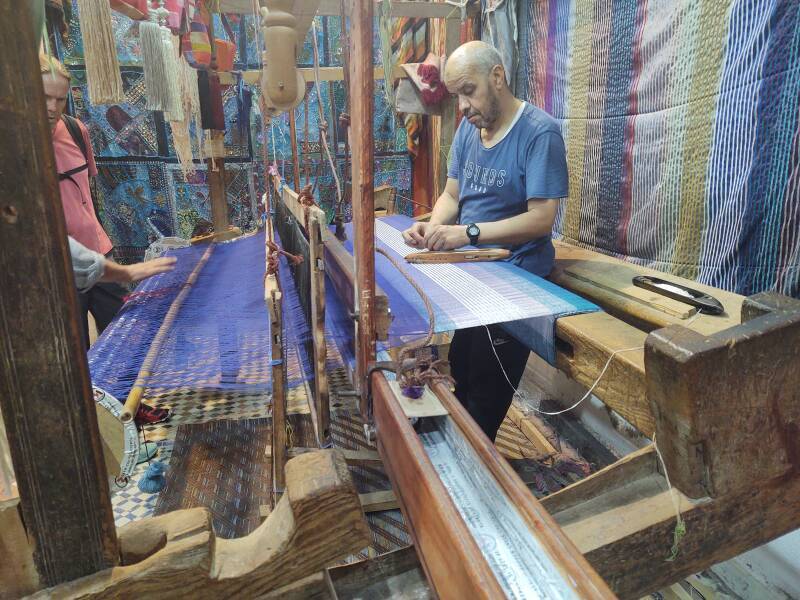
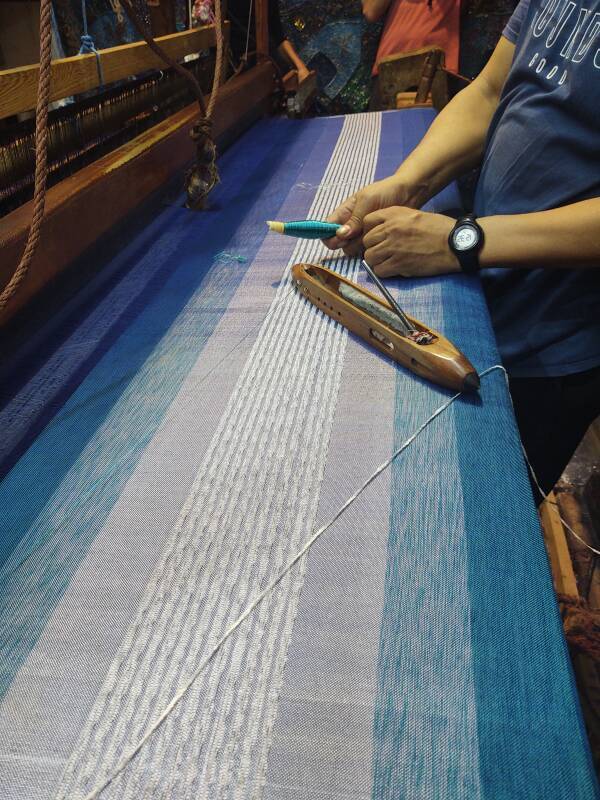
Carpet Shop
Of course we went to a carpet shop. I felt bad for the assistant, as he carried out a long sequence of heavy woolen rugs and unrolled them.
I anticipated that that would happen, and I told the proprietor that I definitely wasn't going to buy anything.
But of course many were carried out and unrolled, and would have to be re-rolled and carried away after I left.
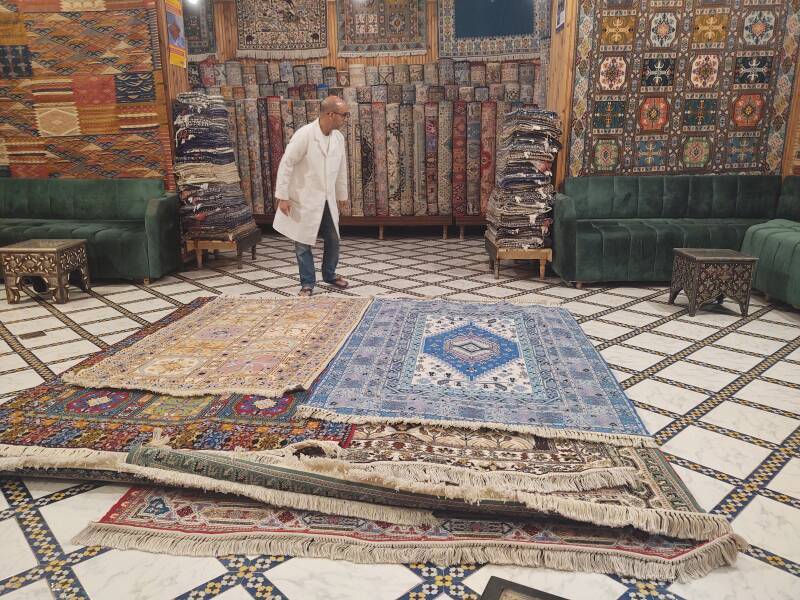
And there were other shops — a lamp store where they built their lamps from brass sheets; an embroidering workshop where they made napkins, placemats, table cloths, and pillowcases; a leather store where they had shoes and sandals and jackets and many more items; and so on.
Things are Bright and Clean
In the afternoon, after the tour, the sky cleared and brought out the brightly painted walls.
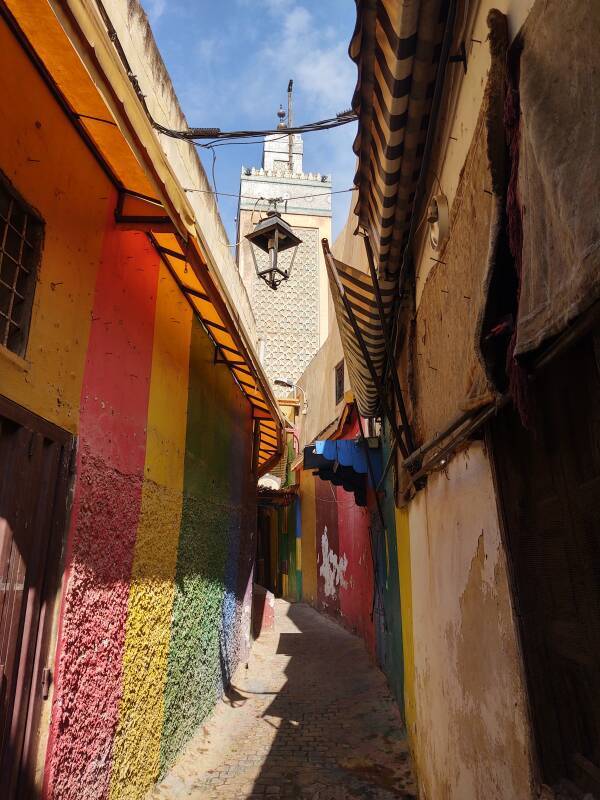
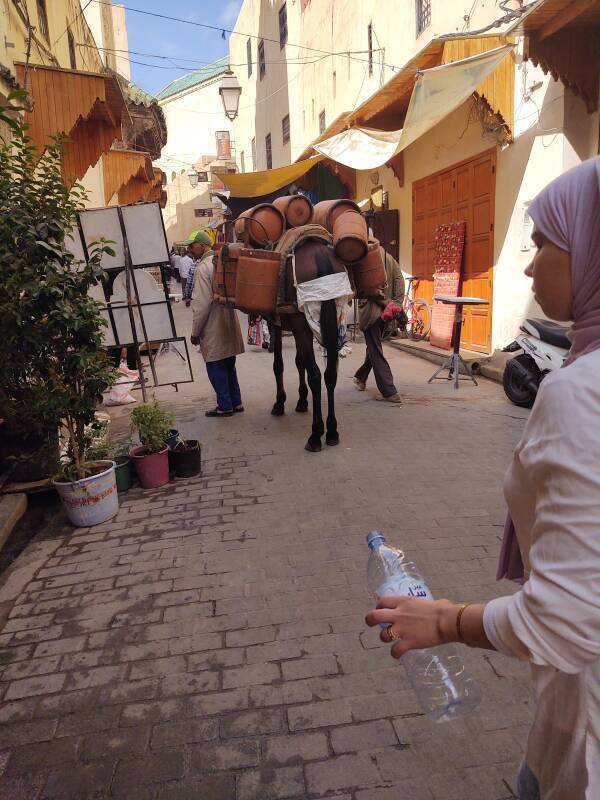
Above is the widest section of Tala'a Sghira. Other sections are narrower, steeply sloped and with staircases. Cars and trucks can't enter the medina, they simply wouldn't fit and couldn't navigate. Donkeys and mules and horses are used to transport cargo, like the above load of propane tanks. Of course all the pack animals wear a form of diaper, so that only very minimal waste hits the streets and passageways.
Where I grew up in Indiana, in the U.S.A., a religious sect rejects most technology later than the late 19th century, and even things like the electrical telegraph that became widely deployed in the 1830s. And so they get around in horse-drawn buggies with no concern about the piles of horse droppings they leave everywhere. To go into the grocery store, you have to make your way through a parking lot with piles of horse feces scattered around. The feces liquify and flow when it rains, and more gets tracked into the store.
Well, that's to be expected in a backward place like Indiana. Morocco has no such nonsense.
Now for a detailed visit to the al-Attarine Madrasa.
Or, Continue Through Morocco:
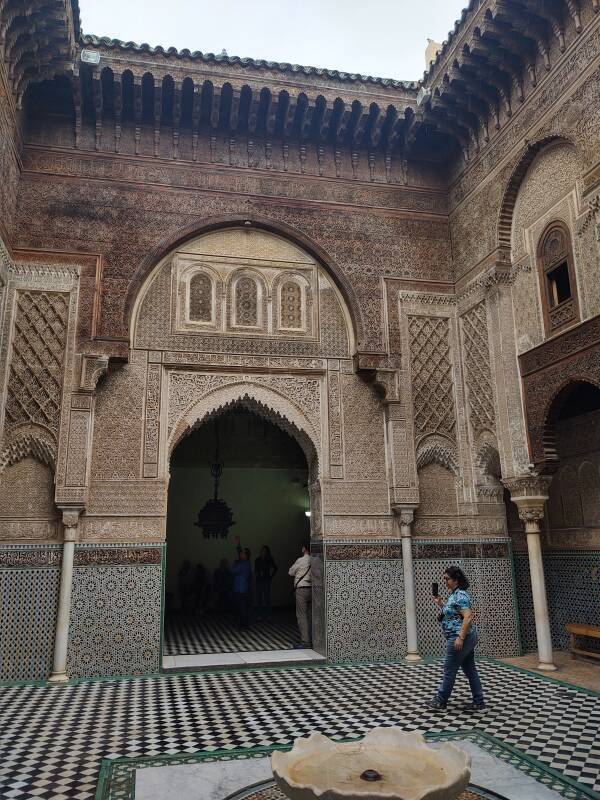
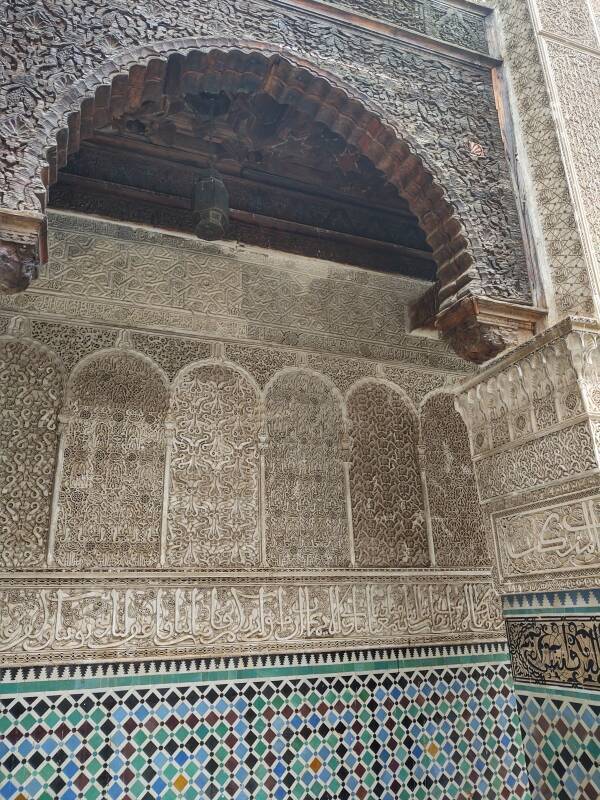
Brass is an alloy of copper with about 34% zinc.
Bronze is an alloy of copper with about 12–12.5% tin.